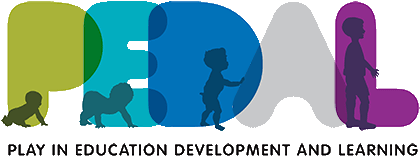When infants and adults communicate, they exchange social signals of availability and communicative intention such as eye gaze. Previous research indicates that when communication is successful, close temporal dependencies arise between adult speakers’ and listeners’ neural activity. However, it is not known whether similar neural contingencies exist within adult–infant dyads. Here, we used dual-electroencephalography to assess whether direct gaze increases neural coupling between adults and infants during screen-based and live interactions. In experiment 1 (n = 17), infants viewed videos of an adult who was singing nursery rhymes with (i) direct gaze (looking forward), (ii) indirect gaze (head and eyes averted by 20°), or (iii) direct-oblique gaze (head averted but eyes orientated forward). In experiment 2 (n = 19), infants viewed the same adult in a live context, singing with direct or indirect gaze. Gaze-related changes in adult–infant neural network connectivity were measured using partial directed coherence. Across both experiments, the adult had a significant (Granger) causal influence on infants’ neural activity, which was stronger during direct and direct-oblique gaze relative to indirect gaze. During live interactions, infants also influenced the adult more during direct than indirect gaze. Further, infants vocalized more frequently during live direct gaze, and individual infants who vocalized longer also elicited stronger synchronization from the adult. These results demonstrate that direct gaze strengthens bidirectional adult–infant neural connectivity during communication. Thus, ostensive social signals could act to bring brains into mutual temporal alignment, creating a joint-networked state that is structured to facilitate information transfer during early communication and learning.
